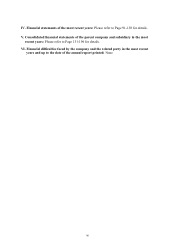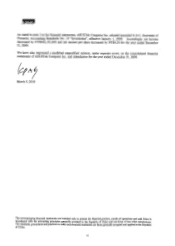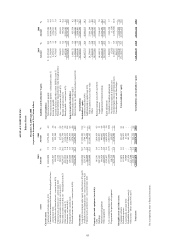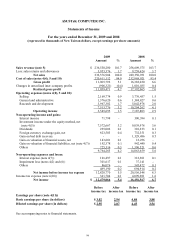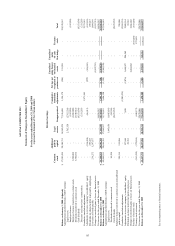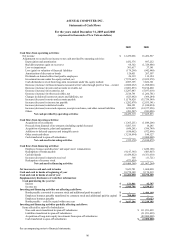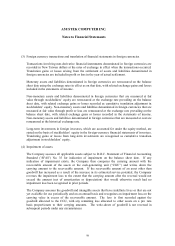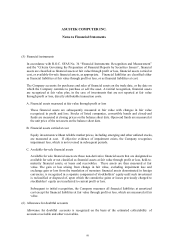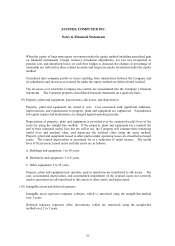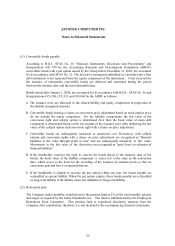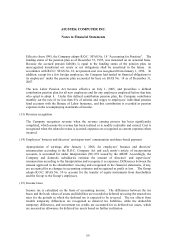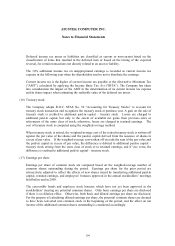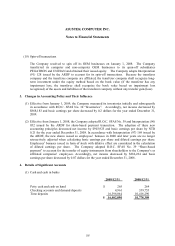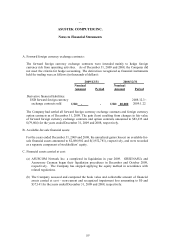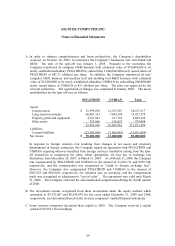Asus 2009 Annual Report Download - page 104
Download and view the complete annual report
Please find page 104 of the 2009 Asus annual report below. You can navigate through the pages in the report by either clicking on the pages listed below, or by using the keyword search tool below to find specific information within the annual report.100
ASUSTEK COMPUTER INC.
Notes to Financial Statements
(7) Inventories
The costs of inventories include those necessary expenditures incurred in bringing each item of
inventory to its usable condition and location. Cost is calculated on a weighted-average basis.
Up to December 31, 2008, inventories were valued at the lower of cost or market value using the
gross method. The market values of raw materials and supplies were based on the replacement
cost, while those of work in process and finished goods were based on net realizable value.
Effective January 1, 2009, inventories are valued at the lower of cost or net realizable value. Net
realizable value by item is determined based on the estimated selling price in the ordinary course
of business, less estimated costs of completion and costs incurred in order to make the sale.
(8) Long-term equity investments
Long-term investments are accounted for under the equity method when the percentage of
ownership held by the Company and its subsidiaries exceeds 20% or if the Company and its
subsidiaries own less than 20% of the investee’ s common stock but have significant influence on
the investee’ s operations. If an investee company accounted for under the equity method issues
new shares and the Company does not purchase new shares proportionately, then the investment
percentage, and therefore the equity in net assets of the investee, will be changed. The effect of
such change is adjusted against the additional paid-in capital resulting from long-term equity
investments or retained earnings.
The difference between the cost of the investment and the amount of underlying equity in net
assets of an investee attributed to depreciable, depletable, or amortizable assets is amortized over
the estimated remaining economic years. The difference attributed to the carrying amount in
excess of or lower than the fair value of assets is written off entirely when the difference
disappears. The cost of investment in excess of the fair value of identifiable net assets is
recognized as goodwill and is no longer amortized. The difference attributed to the fair value of
identifiable net assets in excess of the cost of investment causes a proportional decrease in the
carrying amount of non-current assets. When the carrying amount of non-current assets is
decreased to zero, the remaining difference is recorded as extraordinary gain or loss.
The difference between the disposal price and carrying amount of long-term equity investment
under the equity method on the disposal date is recognized as gain or loss from disposal of long-
term equity investment. The associated additional paid-in capital resulting from long-term equity
investment is reclassified into current gain or loss in proportion to disposal of long-term equity
investment.


